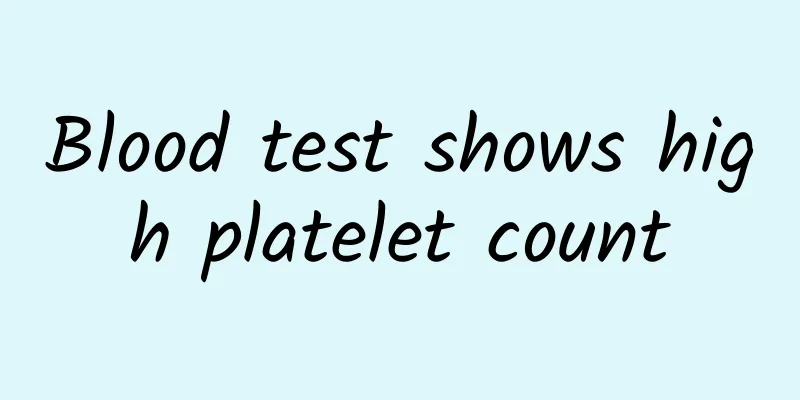Blood test shows high platelet count

|
How to check blood has always been a concern for people. In fact, more and more young people now do not pay much attention to blood examinations in their daily lives, but always think that high platelets are actually nothing. When it happens to children, parents will be very worried because they hope they will get sick and do not want their children to get sick. When a child’s platelet count is found to be high, what should they pay attention to? The reason why children have high platelet count is that the normal platelet count of a person is one hundred to three hundred times ten to the ninth power per liter. High platelet count can be caused in many cases, and there are physiological reasons. Normal people generally have a change of 6% to 10% a day, which is lower in the morning and slightly higher in the afternoon, lower in spring and slightly higher in winter. It can also increase after exercise. Pathological myeloproliferative diseases, primary thrombocythemia, acute hemolysis, and acute suppurative infection can all cause increased platelet count. If the platelet count is only slightly increased, it is generally considered to be reactive thrombocytosis, which is common in acute and chronic inflammation, iron deficiency anemia, etc. This type of increase generally does not exceed five hundred times ten to the ninth power per liter. After treatment, the number of platelets will quickly return to normal levels. Children themselves are relatively weak, and their ability to resist diseases is slightly worse than that of adults, so inflammation may be more common, and some children may have iron deficiency anemia, which may also cause high platelet counts. Therefore, if a child is found to have high platelet counts, go to the hospital for timely treatment, check the cause clearly, and then treat it symptomatically. What can't you eat if your platelet count is too high? Elevated platelet count refers to a platelet count greater than four hundred times ten to the ninth power per liter. This is a condition we often encounter clinically. Patients are also more concerned about their diet. It is recommended to eat foods that can dilute the blood, such as hawthorn, black fungus, garlic, onion, green onion, bell pepper, shiitake mushrooms, strawberry, pineapple, lemon, etc. These foods can inhibit platelet aggregation and prevent platelet formation, so you can eat more of them. In addition, drinking plenty of water and a proper diet are very important. Foods that should not be eaten include eating less animal offal and fat, eating less fried food, and not eating too much meat and greasy food for dinner. Eat less sweets, eat more light food, a combination of coarse and fine grains, eat more foods rich in phosphatidylcholine, eat more soybeans and soy products, eat more fruits and vegetables containing vitamin C, which are very important for the treatment of high platelets. |
<<: What disease is chyluria seen in?
>>: What is the shelf life of Maca?
Recommend
How to deal with summer heat rash
In summer, because of the hot weather, people alw...
Taboos of pickled eggs in vinegar
Most girls nowadays have spots on their faces, wh...
What to do if you have heartburn after drinking alcohol
Many people like to drink, and drinking is essent...
What does thread embedding in traditional Chinese medicine mean?
Chinese medicine thread embedding is also known a...
What are the symptoms of mastitis edema?
Mastitis is accompanied by edema, which can cause...
The harm of frequent use of water floss
Bad hygiene habits can easily lead to various ora...
What to do if there is a crack in the big tooth
We all know that normal people have twenty-eight ...
Chinese medicine treatment of eczema
Speaking of eczema, many friends know that newbor...
Urine color and health status
The color of urine is closely related to human he...
What are the benefits of girls sleeping naked? Four precautions for sleeping naked
Sleeping naked is very beneficial to women's ...
Why am I losing my hair recently?
It is normal to lose hair in the hot summer, but ...
What to do if the femoral head is broken
The femoral head is also a relatively important pa...
How does Chinese medicine look at tongue coating? Teach you how to tell whether you are healthy based on the tongue coating
Whether the color of the tongue coating is normal...
The ten benefits of leg meridians
The importance of unobstructed meridians is self-...
There are five main causes of nephritis:
There are a large number of people suffering from...









